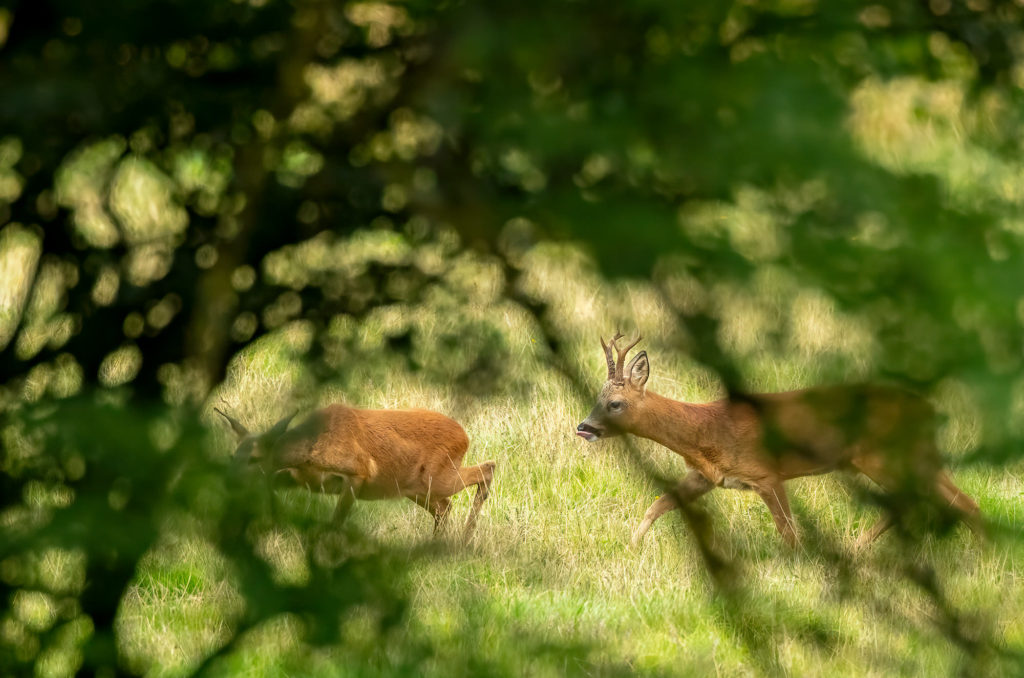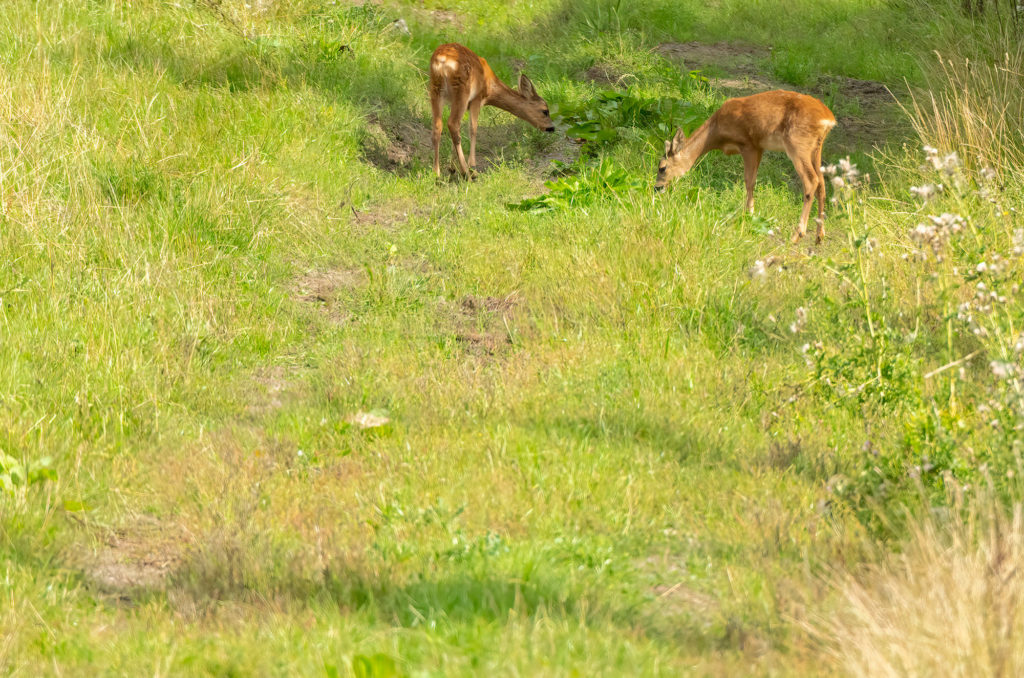The chase is on in this image. It was supposed to be a hunting kingfisher. As you can see, these are roe deer, and they aren’t in a river. Allow me to explain.
I was at my kingfisher location trying to find a position to successfully capture one of the birds fishing. Unfortunately, the kingfisher was determined to hunt in the only area where my view was completely blocked by branches. While I hopelessly shuffled about trying to keep an eye on the bird, I saw a flash of brown in the field behind the opposite river bank. I used back button focus to get a clear view beyond the thick cover of trees. Through the viewfinder, I saw two roe deer kids herded away by their mother with a buck in hot pursuit. This is one of two images I captured before the deer disappeared from view. It is not a perfect image, but I like that the roe kid is framed by tree branches and that there is movement and action. The slight downside was seeing the kingfisher disappear up the river during this eventful few seconds, but I am always happy to photograph the unexpected. This occasion was no exception.

The roe deer rut usually occurs between mid-July to mid-August. Chases like this are a courtship ritual as the buck and doe will run around together until the doe is ready to mate. Although mating occurs in summer, the fertilised egg does not implant and grow in the doe’s womb until January. This is probably an evolutionary strategy that avoids having to give birth during harsh winters in northern climates. The gestation period is nine months, but there are only five months of foetal growth in that period.

And here are the twins. After I captured the images of the chase, I continued on my walk. I ended up at the opposite end of the field to where the deer had been running. Walking up the lane, I did not expect to see the deer again, but I made sure I kept quiet, just in case. I was pretty surprised when I stopped at the field gate and saw these kids grazing peacefully together. I can only assume they were the same pair, but I can’t be sure. Either way, they were not at all bothered by me photographing them from a distance. The light was mostly overcast, so I was pleased when the sun made a very brief appearance for this moment. Although not a stunning image, it clearly shows how relaxed the twins were.
Roe deer females usually give birth to twins, although they sometimes have single kids or triplets. These kids would have been born between mid-May and mid-June, so they were a few months old when I photographed them. As you can see, they have lost the dappled pattern on their coat. This dappling helps them camouflage when they lay still amongst the vegetation while the mother leaves them to feed and they lose it at around six weeks old.
Maybe the next time I try to photograph the roe deer, the kingfisher will appear instead.

